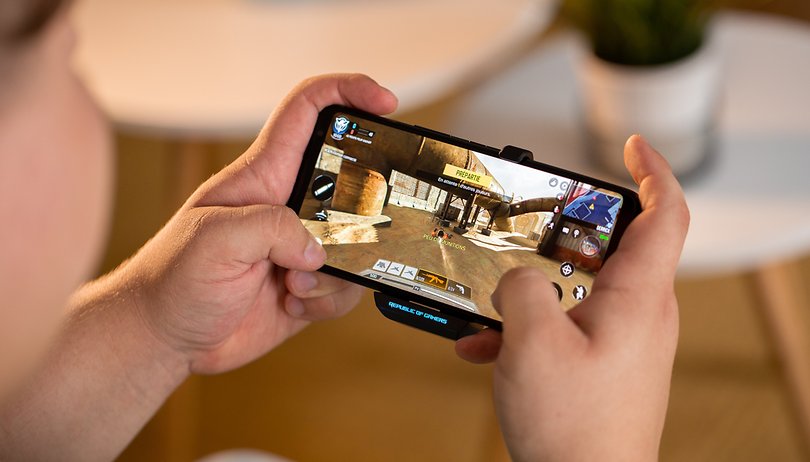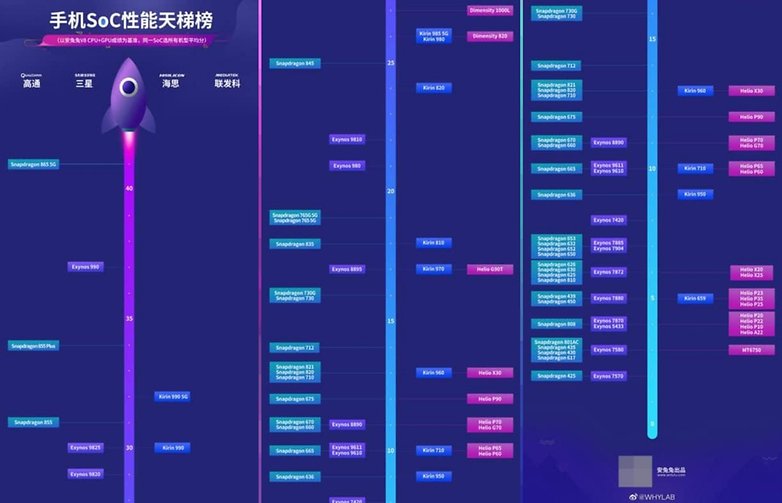Gaming smartphones: do you need a 144 Hz screen, 16 GB of RAM and the latest Snapdragon chipset?


144 Hz display, 16 GB of RAM, 512 GB or even 1 TB of UFS 3.1 storage and a state-of-the-art Snapdragon processor. Aren't gaming smartphones a bit over the top with all these hardware specifications? Do you really need all that power to play most Android and iOS games? Let us break down the nitty-gritty in order to separate myth from reality, shall we?
The architecture of a gaming smartphone is broadly similar to that of a PC. Increasingly, smartphone components do seem to be making leaps and bounds in terms of progress where the once huge gap between them and PCs have begun to narrow: as evidenced by Asus' ROG Phone 3, for instance.
Make no mistake about it: while the hardware specifications of gaming smartphones have improved greatly over the years, we are still light years away from running Crysis in ultra-high graphics mode and 4K 60 fps on a smartphone. This does not detract from the fact that selected handsets do come equipped with as much RAM as a gaming PC, so what does all of that RAM do in a gaming smartphone?
In this first chapter of a new series dedicated to mobile games and gaming smartphones, I will try to explain the importance (or perhaps lack of it) of the main components found within a gaming smartphone. We will also try to see if it is necessary to have a souped-up machine in order to run Fortnite or Call of Duty.
Summary:
- Refresh rate: a placebo effect?
- A word about gaming display criteria
- A smartphone that has as much RAM as a gaming PC: Is it overkill?
- How an Android smartphone uses RAM
- Having the latest Snapdragon processor: Necessity or Redundant?
- Conclusion
Refresh rate: a placebo effect?
The display is one of the components in a smartphone that has made the most progress in recent years, and even more so in recent months. The biggest and most recent advance has of course, been the refresh rate.
Refresh is related to the number of FPS ("frames per second"), i.e. the number of frames the display is able to display per second. This notion, which is expressed in Hertz, depends directly on the computing power of your smartphone (i.e. the SoC, which is discussed below).
Until 2019, the standard refresh rate for a smartphone screen was 60 Hz, which translates to 60 images displayed per second. However, OnePlus turned things upside down with the OnePlus 7 Pro and its 90 Hz (90 frames per second) display.

Since then, many manufacturers have followed suit, some offering even higher rates like 120 Hz on the latest Samsung Galaxy S20, 144 Hz with the Asus ROG Phone 3, or the Nubia RedMagic 5G and even 240 Hz on the Sharp Aquos Zero2.
The higher the refresh rate, the less motion blur there is. This is very important for smartphones where we often scroll through images at high speed. It also makes games and videos alike look smoother.
When in use, you can really spot the difference between 60 and 90 Hz. Animation and content scrolling on the screen are both far less jerky. Beyond that, the perception of fluidity in 120 or 140 Hz is a whole lot more subtle. It's really an improvement that you don't notice at first glance, but you will feel the absence of it when you return to a device with a 60 Hz screen.
For games, it is therefore an essential criterion. And I would advise you to aim for at least 90 Hz if you would like to enjoy an optimal experience. I will let you go through a comparison of the different refresh rates with slow-motion recordings made by tech YouTuber sakitech.
A word about gaming display criteria
In this quick explanation, I would like to remind you that the most important criteria for a screen would be its size and resolution. All of these have already been explained in a more detailed article as shown in the link below. All that I would like to say is this: the larger the screen size, there must be a corresponding increase in resolution to ensure an appropriate viewing experience, otherwise you would end up with hugely pixelized images on display.
As the resolution count increases, the more pixels are displayed on the screen. Depending on whether the definition is in HD, Full HD, Quad Full HD, Ultra HD, or 4K, there will be additional strain on the processor. Personally, I prefer smoothness as opposed to a higher resolution when it comes to gaming.
- Read also: Smartphone screens explained
I would, therefore, prefer to opt for a Full HD screen in 120 Hz compared to a UHD screen running at 60 Hz. Do bear in mind that one would need to have the necessary computing power in order to take advantage of such smoothness without resulting in too fast a battery drain, or dropped framerates that are anathema to serious gamers.
Response time is also very important. It is measured in milliseconds and corresponds to the delay between the moment the player performs an action and the moment it occurs on the screen. On a PC monitor, the reference value stands at 1 millisecond. The Asus ROG Phone 3 offers a similar 1ms response time on its display.
Finally, the frequency of tactile sampling can also be an interesting factor to consider. This is the number of times the smartphone records whenever you touch the screen. On some gaming smartphones, this value can be as high as 240 Hz or even 270 Hz.
In practical terms, this means that every time you touch the screen, it records 270 times per second that you have placed your finger on it. This allows you to be far more accurate when aiming in an FPS game, for instance. But important as it is, it is still not as critical as the refresh rate.
- Conclusion: A high refresh rate is a real feature.
A smartphone with as much RAM as a gaming PC: Is it overkill?
Do you need 12 or even 16 GB of RAM in a smartphone? For me, the answer is obviously no. But this is not a new criticism at all, and the question arises every single time a new handset is released.
At NextPit, this topic is being addressed for the transition to 6 GB of RAM in 2016, followed by 8 GB in 2018. We did explain that smartphones on average, use less than 4 GB of RAM at the most. Even the newest iPhones are still equipped with 4GB of RAM and games run perfectly. One thing must be noted though: iPhones and the iOS have been highly optimized in order to function with less RAM as opposed to the Android OS due to different RAM management strategies.
This is due to the software optimization specific that each manufacturer uses as well as its management of each OS when it comes to applications running in the background. Part of the RAM of your smartphone is reserved for certain tasks by default.
When it comes to reserved memory, the amount often represents only a tiny fraction of total RAM installed on the smartphone.
On some smartphones, you can check just how much RAM is utilized by checking out the memory management settings, but this is not always the case. My brilliant American colleague Gary Sims of Android Authority, who is far more erudite than I am on this subject, has illustrated the average RAM usage under Android in the following graphic.
All in all, I'd say that 6 GB of RAM is more than enough for anyone to enjoy games without putting too much strain on your smartphone's processor. But manufacturers tend to "kill" apps in the background in order to free up RAM and save battery power in the process.
If you play resource-hungry games, this will only increase the effect. In practical terms, you don't need more than 6 GB of RAM. But that doesn't mean you turn your nose at having more RAM.
Indeed, the more RAM you have, the less difficult it will be for the smartphone to run all the tasks that you have asked it to perform. For example, when you play Call of Duty Mobile in very high graphics settings and 90 Hz while having the Discord app running in the background to chat with your team, this is where having more RAM comes in handy as it helps to avoid slowdowns in the game itself simply because your smartphone has too much on its plate to handle.
But in most cases, 10 or 12 or even 16 GB of RAM is overkill and absolutely unnecessary. 6 or 8 GB at the most are more than enough - for now.
- Conclusion: 10, 12 or 16 GB RAM is a gimmick.
How an Android smartphone uses RAM:
- The kernel space: On Android, your smartphone runs on the Linux kernel. The kernel is stored in a special type of compressed file that is extracted directly from RAM while the phone is turned on. This dedicated memory contains the kernel or alongside drivers in order to cache data.
- A virtual disk or RAMDisk: Some folders and files on the system are not "real", they are virtual. These are files written at boot that contain data such as battery levels and processor speed. RAM is used to store this information.
- Network data: Data related to your IMEI and network settings is stored in NVRAM (non-volatile RAM), which is not erased when you turn off your smartphone. This data is transferred to the RAM when you turn on your smartphone for the first time to keep everything in the handset's memory and to run your handset's modem.
- The GPU: the graphics processing unit of your smartphone needs memory to work. It is then called VRAM (V for video). This is the storage space dedicated to all the data that is supposed to be displayed on the screen.
Having the latest Snapdragon processor: Necessity or Redundant?
SoC stands for System-on-a-Chip. As the name implies, the SoC is the main computing unit of your smartphone, or its brain. Speaking of just a processor or CPU is not doing it justice: the SoC is not just a processor, it is far more than that. The GPU, the "graphics card" of your smartphone also happens to be a part of it, for instance.
In this area, several manufacturers exist but Qualcomm remains as THE market reference: and its Snapdragon chipset. AnTuTu, the company behind the famous benchmark, has published a ranking of the best performing smartphones of 2020.
Logically, most high-end Android smartphones come equipped with the Snapdragon 865 chipset, even if the last two in this top 10 list happens to be a couple of Samsung flagships that arrived equipped with the Exynos 990 chip. I won't decide in favour of the Exynos 990 because during my test of the Samsung Galaxy S20 Plus, I suffered big problems in terms of smoothness when gaming, experiencing serious framerate drops on Call of Duty Mobile or Fortnite.
Samsung claims that its chip is as powerful as the Snapdragon 865, which also equips its models sold in the U.S. But benchmarks and several tests tend to show the opposite. AnTuTu has also compiled a ranking of mid-range smartphones that includes models equipped with the Snapdragon 720G, 765G or MediaTek's Helio G90T.
In general, marketing strategy dictates that each generation of SoCs should be considered obsolete as the next one is launched. But reality differs as high-end SoCs remain competitive long after their release.

Take the Snapdragon 765G for example, Qualcomm's latest mid-range SoC that does retain a degree of premium capability. It equips the Oppo Find X2 Neo (€650) or the OnePlus Nord (€399), among others. According to our benchmarks and those of our competitors, this SoC performs like a Snapdragon 845 in terms of performance, which is Qualcomm's premium chipset in 2018.
In theory, an "old" 2018 flagship equipped with the Snapdragon 845 is as powerful as a mid-range smartphone from 2020. So we're talking about smartphones like the OnePlus 6T, the Samsung Galaxy Note 9, or the Xiaomi Mi Mix 3.
Snapdragon 765G Benchmark Comparison
| LG Velvet (765G) | Motorola Moto Edge (765G) | Samsung Galaxy Note 9 (845) | |
|---|---|---|---|
| 3D Mark Sling Shot Extreme ES 3.1 | 3001 | 3023 | 3351 |
| 3D Mark Sling Shot Vulkan | 2787 | 2800 | 2857 |
| 3D Mark Sling Shot ES 3.0 | 3984 | 4313 | 2884 |
| Geekbench 5 (Single / Multi) | 536 / 1852 | 587 / 1849 | 669 / 1953 |
| PassMark Memory | 20276 | 20770 | 10040 |
| PassMark Disc | 66528 | 66899 | 71197 |
In any case, a Snapdragon 865 is absolutely not essential for a quality gaming experience. And if you prefer a newer but cheaper SoC, then smartphones with the Snapdragon 765G are a commendable choice.
When I reviewed the OnePlus Nord, I was able to play all my games at the high graphics setting at 30 fps without suffering from any problems. So unless you want to push the graphics to the maximum, you don't need the latest Snapdragon chipset.
The Kirin chipsets from Huawei are also an excellent choice. The old Kirin 980 is still competitive in 2020 and can be found on the Huawei P30 and P30 Pro which have dropped in price since their release in 2019.
The same logic could apply to Apple, whose Bionic A12 chip that equips the iPhone XS, XS Max, and XR rivals the Snapdragon 855 and 855 Plus, which were released later. But I think this issue deserves a full article. Maybe we will explore this in a future article?
Conclusion
I personally play a lot of games on my smartphone. So, I know very well that none of the games currently available requires a machine as powerful as the ASUS ROG Phone 3, for example, whether it's native mobile games (App Store, Play Store) or on the cloud gaming platform.
And even if it was (but it isn't), the vast majority of mobile gamers don't play resource-intensive games anyway. Gaming smartphones are simply too far ahead of their time, and the mobile gaming market is not keeping up with the technical ambitions pursued by manufacturers such as Asus, BlackShark, or Nubia.
This means we do not need the latest Snapdragon, Kirin, Exynos SoCs, or something equivalent. A top-of-the-line SoC from last year or even 2018 may be adequate, provided you adjust your expectations in terms of graphics.
However, I would always advise you to choose the latest and most powerful model for an optimal experience without any compromises - assuming your budget allows it, of course.
You also don't need as much RAM as you do on a gaming PC that comes equipped with 10, 12 or 16 GB. The 6 or 8 GB memory configurations that currently flood the market standard is more than enough. This is surely the point where many manufacturers tend to stress in their marketing materials.
However, if there is one element that is not a gimmick, it is the screen refresh rate. The latter, when set at 90 Hz, is far from being a gimmick. And it is this precise point that has a direct and significant influence on the quality of the mobile gaming experience.
So, yes, gaming smartphones manufacturers are churning out overkill devices. You don't need so much power in your hands to play well on a mobile device. However, you can hardly blame manufacturers for wanting to push more power into their devices all the way to the hilt, can you?
Read also on NextPit:













